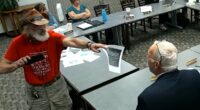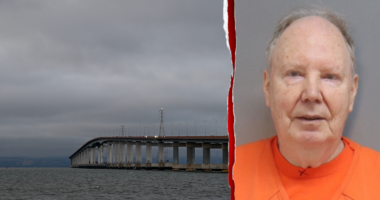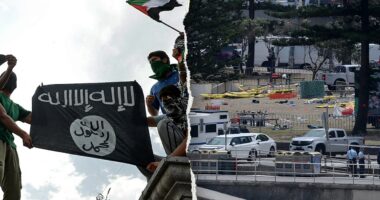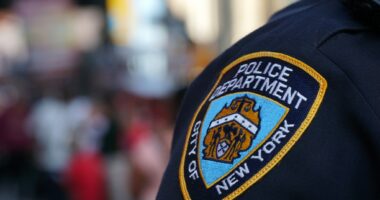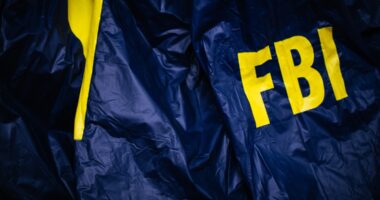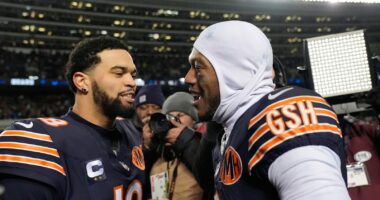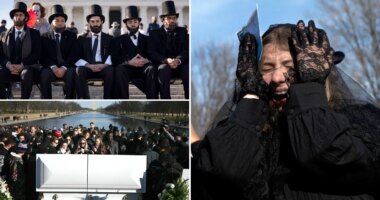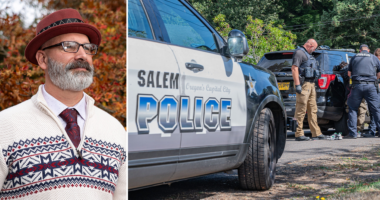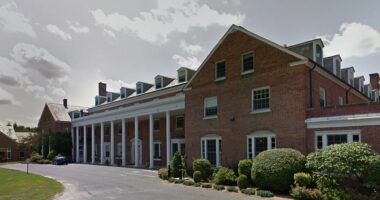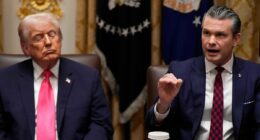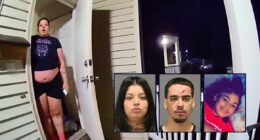Share this @internewscast.com

OREM, Utah (AP) — Over the past twenty years, Utah Valley University has transformed from a modest community college into the state’s biggest institution, acclaimed for being among the safest campuses nationwide.
It took only seconds for that image to be shattered by the assassination of right wing activist Charlie Kirk.
With nearly 50,000 students, the extensive campus nestled beneath the Wasatch Mountains became forever linked to the events of Sept. 10, when a shooting took down the founder of Turning Point USA as he addressed a large audience at an open-air amphitheater in the heart of the campus.
Previously little known beyond Utah, the university was thrust into an unwanted national spotlight during the search for Kirk’s assailant. Students and faculty returned to their academics this week, grappling with sorrow, apprehension, and a pressing question: How can UVU navigate this sudden notoriety?
“This has certainly brought the university more attention than it has ever received,” noted Timothy Calkins, a Northwestern University branding expert. “They didn’t ask for this, but they must find a way to recover.”
University officials emphasize their immediate priority is ensuring the safety of students and the community, but they are also beginning to consider how to rebuild the school’s disrupted identity.
‘We’re not going to shy away’
Kyle Reyes, one of Utah Valley University’s vice presidents, said he hopes the school can be a model of healing and embracing difficult dialogue.
“We know that the eyes are on us and we’re not going to shy away from demonstrating our resilience collectively on this,” Reyes said.
For years, the school experienced minimal violence, according to data from the U.S. Department of Education. UVU’s recent report for its main campus in Orem, covering 2021-2023, noted investigations or reports on four aggravated assault claims, 13 rape cases, one suspected arson, and no murder or manslaughter incidents. Kirk’s death marked the first murder on campus known to administrators, according to University spokeswoman Ellen Treanor.
University officials cite this data to support the claim that it is “one of the safest colleges in the country.”
UVU also touts its strong connections to the Church of Jesus Christ of Latter-Day Saints, as home to the world’s largest education institute for young Mormons. Its mascot is the wolverine. “Just like wolverines, UVU students are determined, ambitious, and fearless,” the university’s website says.
‘We’re all still coming together’
Student Marjorie Holt, 18, who is studying elementary education at UVU, was late to the Kirk rally and arrived minutes before he was shot. She ran with others to shelter inside a nearby building in the immediate aftermath.
In the days since, Holt took time off from work and went home to spend a night with her family in Salt Lake City. She said she feels like the university failed Kirk and his family by not providing better security. She worries about going to classes in a building near the crime scene.
Yet as Kirk’s shooting deepens the nation’s political divides, Holt believes the shared trauma has brought UVU closer together.
“We’re all people who, you know, loved him or hated him,” she said of Kirk. “We’re all still coming together no matter how we believed, and I feel like this has made our school closer than ever.”
Back to class, but not back to normal
When students returned Wednesday, they reported classes were quieter than usual. Matthew Caldwell, 24, said that in history class, “it felt as if the professor was more understanding of all beliefs and that ultimately it’s about sharing those beliefs.”
Student body President Kyle Cullimore urged his classmates during a Friday vigil to stop putting labels on one another and see each other as human so that UVU can be a “place where disagreement doesn’t erase our dignity.”
Other schools that became synonymous with shootings offer different templates for addressing the fallout.
The Columbine High School massacre of 1999 ushered in heightened security and training for shooters at schools across the U.S. On the same day Kirk was killed, those protocols were put to test in a shooting at Colorado’s Evergreen High School when two students were injured and the shooter took his own life. It’s the same school district as Columbine, and officials credited years of preparation and training for avoiding more casualties.
Following shootings at Virginia Tech University in 2007, Connecticut’s Sandy Hook Elementary School in 2012 and Florida’s Marjory Stoneman Douglas High School in 2019, student victims and family members funneled their grief into activism for gun control.
In Uvalde, Texas, officials voted to demolish Robb Elementary School after a mass shooting that killed 19 students and two teachers.
The rest of the story
At Kent State University, where National Guard soldiers killed four students and wounded eight others at a Vietnam War protest in 1970, Professor Johanna Solomon said the school has since leaned into its role as a place to freely express ideas.
There were struggles along the way. Starting in 1986, the Ohio school began changing athletics uniforms, letterhead and signage to highlight “Kent” and put “State University” in small letters underneath, trying to distance itself from the shooting. The change was dropped in 2000, said Karen Cunningham, a professor in Kent State’s School of Peace and Conflict Studies that was established in response to the 1970 shootings.
“I’m very proud of their decision to realize as a university that it wasn’t escaping or forgetting what happened,” said Solomon. “Leaders have a really stark choice after things like this happen, and one is to lean into division and the other side is to humanize people, to bring people together.”
As UVU students ventured back last week, Republican Utah Gov. Spencer Cox met with a small group on campus. “It has been rough, right, for all of us,” he acknowledged. The world only knows one thing about UVU now, he said — and he wants everyone to know the rest of the story.
“This place is incredible and it’s incredible because of the students that are here, amazing faculty,” Cox said. “The world desperately needs change, but they’re not going to find it from politicians. It’s got to come from you.”
__
Brown reported from Billings, Mont.

